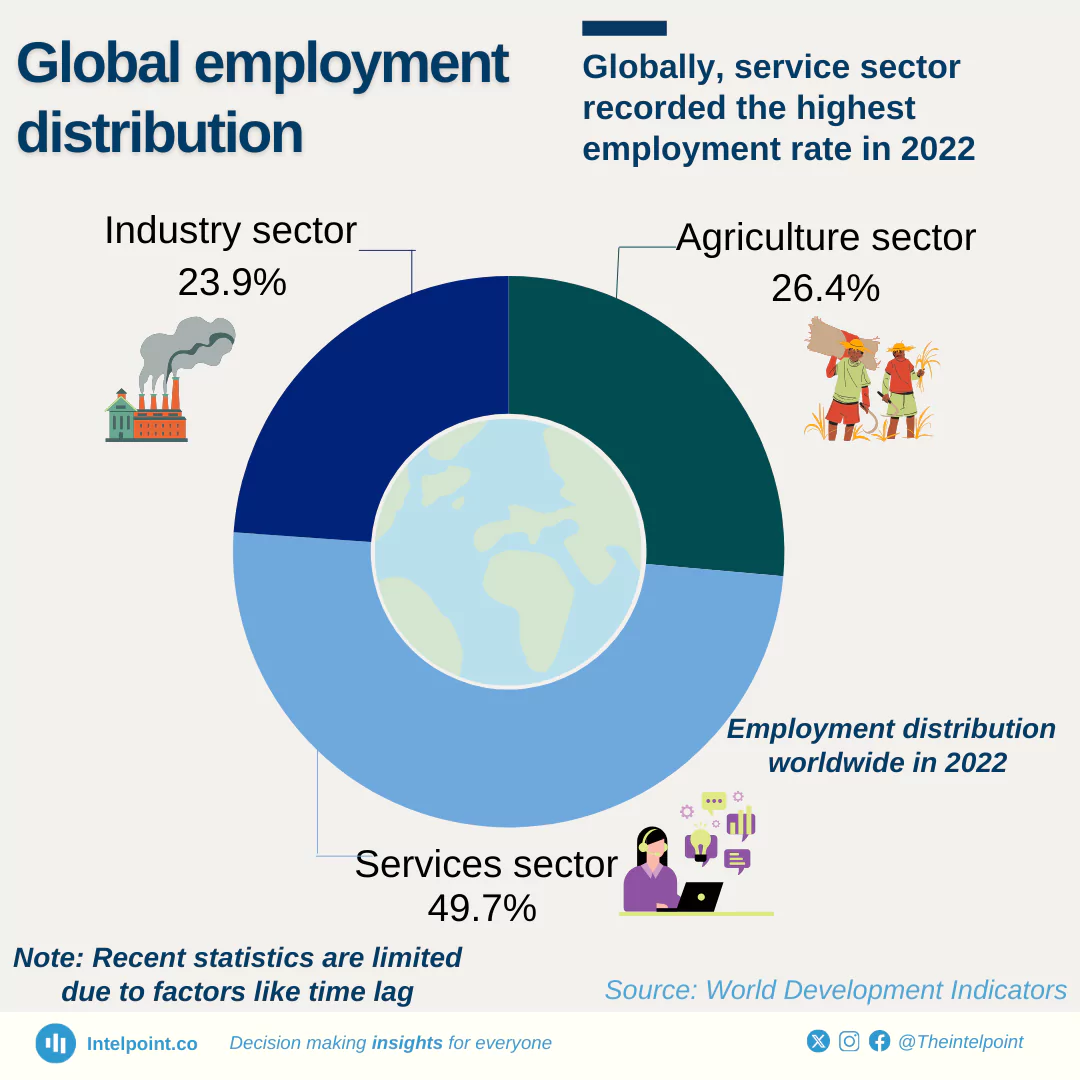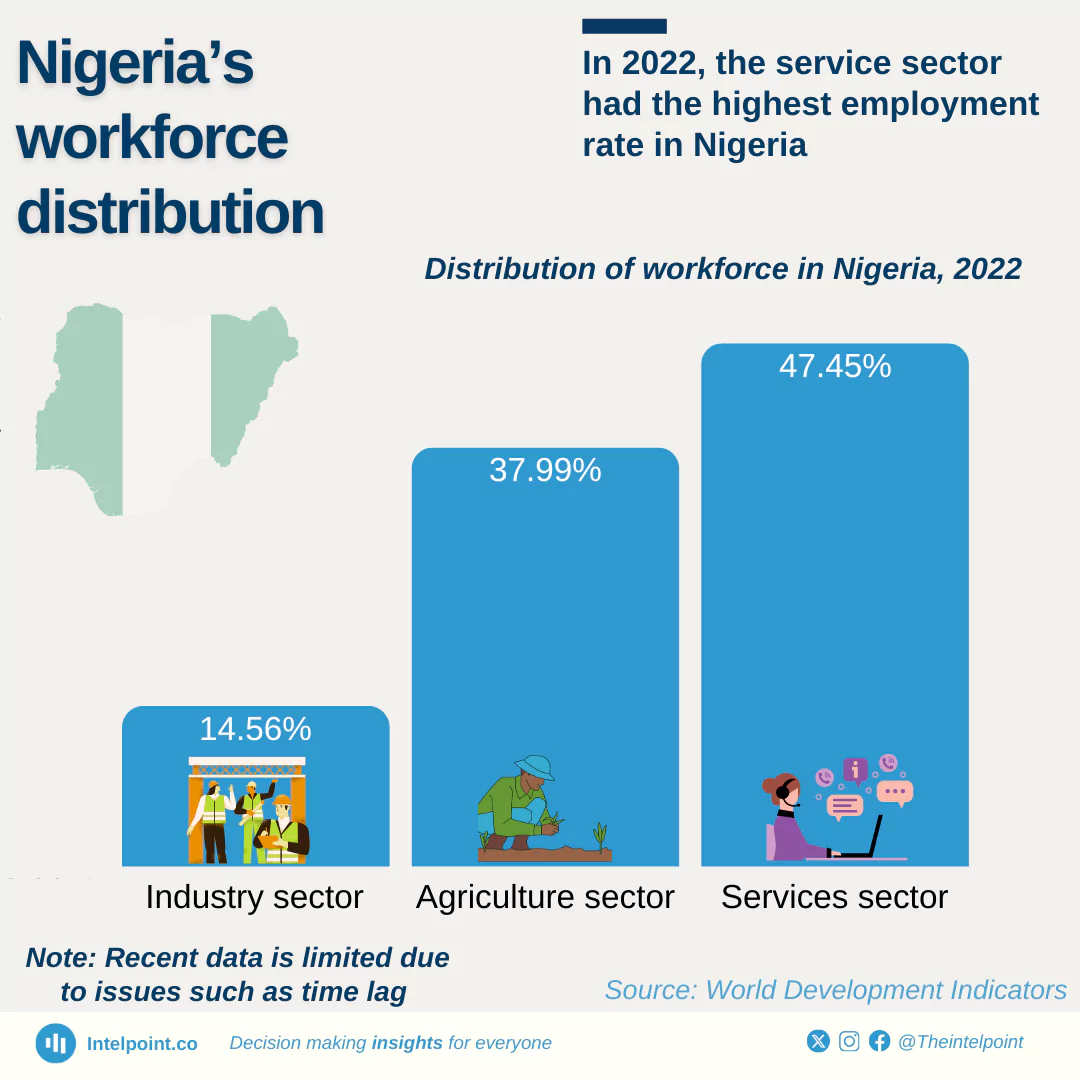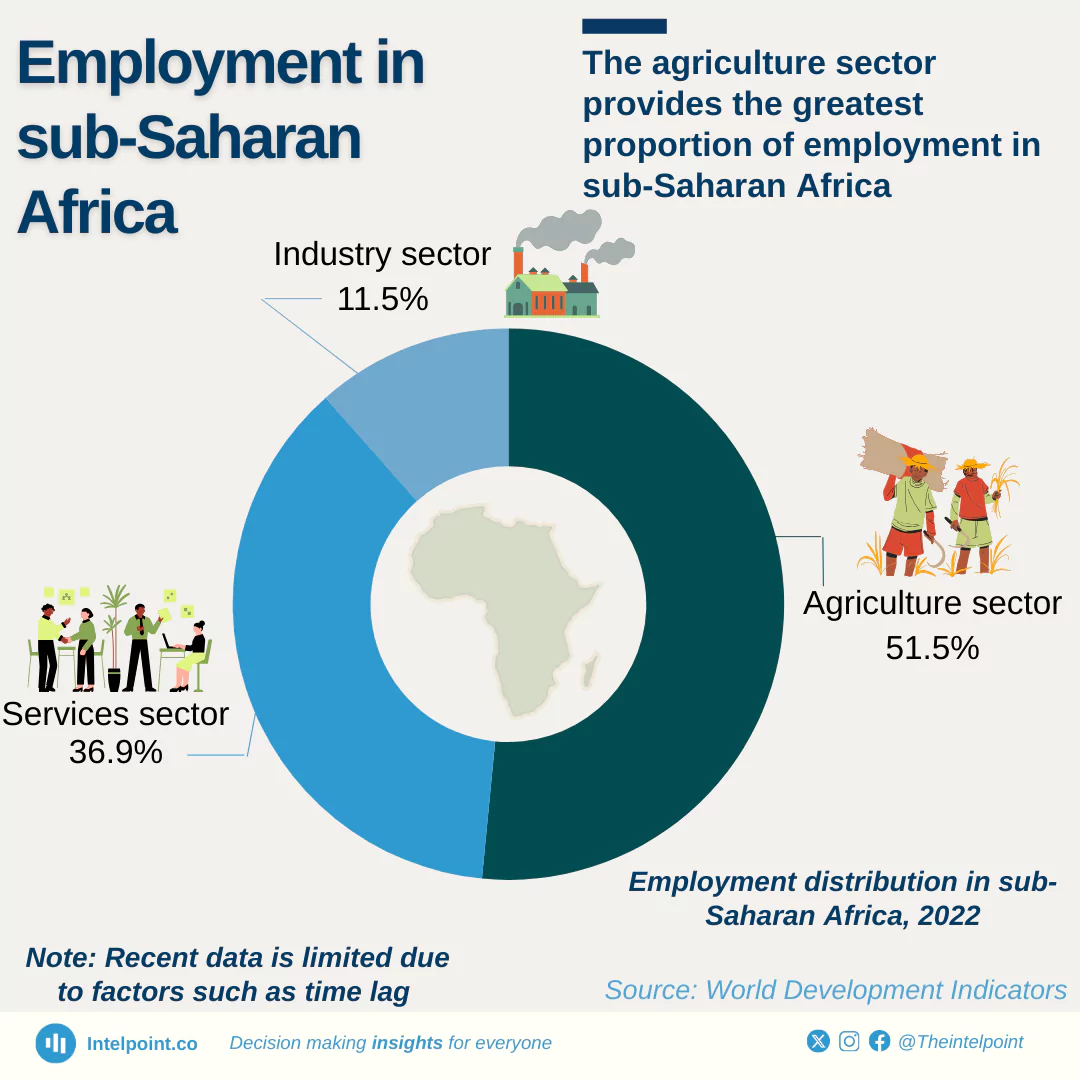The continent of Africa has undergone significant changes in their labour force over the years. Nigeria, for instance, saw its labour force skyrocket from 8,861,9376 in 2016 to 110,183,277 in 2023, with a dramatic increase in the country's labour market and also making it the largest on the continent. Similarly, Ethiopia has experienced an ever growing labour market, from 49,112,032 in 2020 to 52,886,553 in 2023.
Africa's total population was estimated at 1,478,973,883 in 2023, with the total labour force reaching 566,202,266. This means that only 38.29% of the population actively participated in the labour market.





